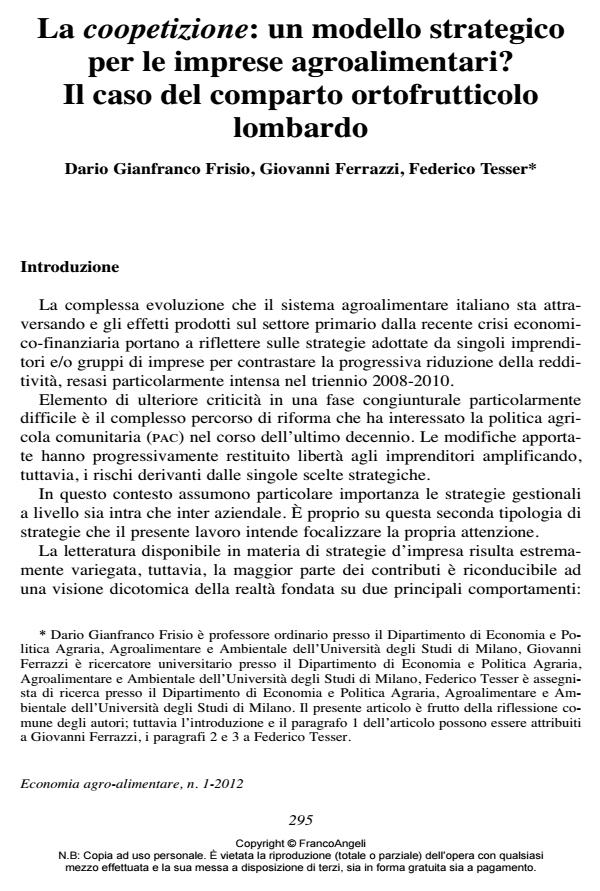Coopetition: a Strategic Model for Agribusiness? The case of horticultural sector in Lombardy
Journal title ECONOMIA AGRO-ALIMENTARE
Author/s Dario Gianfranco Frisio, Giovanni Ferrazzi, Federico Tesser
Publishing Year 2012 Issue 2012/1
Language Italian Pages 23 P. 295-317 File size 711 KB
DOI 10.3280/ECAG2012-001014
DOI is like a bar code for intellectual property: to have more infomation
click here
Below, you can see the article first page
If you want to buy this article in PDF format, you can do it, following the instructions to buy download credits

FrancoAngeli is member of Publishers International Linking Association, Inc (PILA), a not-for-profit association which run the CrossRef service enabling links to and from online scholarly content.
The presence of hybrids in the agribusiness system as well as the growing interest showed by the economic side of businesses prompt speculation about the present role of such coordinating structures in agribusiness. Numerous studies have addressed separately on competition and on cooperation. In recent years this dichotomic perspective of reality was joined by an interpretation focused on the study of new strategic behaviours characterized by the simultaneous presence of cooperative and competitive attitudes, indicated by the neologism coopetition. Aim of this work is to verify the presence of coopetitive behaviours in the horticultural sector, chosen as a case study and to define the driving forces of these strategic models.
Keywords: Coopetition, hybrids, strategies
Jel codes: L22, L23, Q12, Q13
- What Factors Encourage Intrafamily Farm Succession in Mountain Areas? Daniele Cavicchioli, Danilo Bertoni, Federico Tesser, Dario Gianfranco Frisio, in Mountain Research and Development /2015 pp.152
DOI: 10.1659/MRD-JOURNAL-D-14-00107.1
Dario Gianfranco Frisio, Giovanni Ferrazzi, Federico Tesser, La coopetizione: un modello strategico per le imprese agroalimentari? Il caso del comparto ortofrutticolo lombardo in "ECONOMIA AGRO-ALIMENTARE" 1/2012, pp 295-317, DOI: 10.3280/ECAG2012-001014